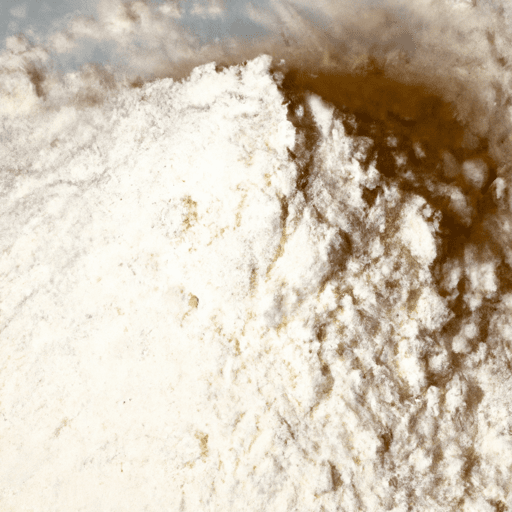Discovering the Versatility and Nutritional Benefits of Wheat Flour
When it comes to the world of cooking and baking, one ingredient stands out as a staple in countless recipes: wheat flour. This humble pantry staple has long been treasured for its versatility, taste, and nutritional value. Join us today as we dive deep into the realm of wheat flour and uncover everything you need to know about this essential ingredient.
A Flour for all Tastes
Wheat flour is well-known for its mild, nutty flavor that is both pleasing and comforting. Its taste varies slightly depending on the type of wheat used and the refinement process. Generally, the flavor profile ranges from slightly sweet and earthy to subtly nutty, making it a perfect base for an array of delicious dishes.
The Building Block of Baking
Wheat flour is the cornerstone of baking, its structure-building properties responsible for the tender crumb of bread, cakes, cookies, and pastries. Its gluten-forming proteins, glutenin and gliadin, give wheat flour its unique ability to produce elasticity and structure when mixed with liquid. This magical gluten network captures the carbon dioxide produced by leavening agents, allowing dough or batter to rise and develop a soft and fluffy texture.
Wheat Flour in Savory Delights
Beyond its role in baking, wheat flour shines in savory culinary creations. It serves as a key ingredient in thickening sauces, gravies, and soups, lending them a luscious and velvety consistency. Coating foods in wheat flour before frying creates a crisp and golden crust, sealing in moisture and enhancing the flavors. From fried chicken to tempura vegetables, the possibilities are endless!
Unveiling the Nutritional Powerhouse
Wheat flour boasts an impressive nutritional composition, making it a valuable addition to a healthy diet. While white wheat flour is commonly enriched with vitamins and minerals, whole wheat flour takes the nutritional game to another level. Packed with fiber, vitamins B, E, and minerals like magnesium and potassium, whole wheat flour provides nourishment and aids in digestion. It also has a lower glycemic index compared to refined white flour, making it a more suitable choice for those aiming to maintain stable blood sugar levels.
A Journey Through History
The story of wheat flour dates back thousands of years. Ancient civilizations, such as the Egyptians and Greeks, recognized its importance as a dietary staple and symbol of sustenance. The development of milling techniques in medieval Europe paved the way for finer, more versatile wheat flour. Today, modern milling methods allow us to enjoy a wide range of wheat flours, including all-purpose, bread, cake, and pastry flour, each specifically crafted to suit various culinary needs.
Fun Facts to Whet Your Appetite
- Wheat flour contains gluten, a protein responsible for the elasticity of dough.
- There are six major types of wheat: hard red winter, hard red spring, soft red winter, durum, hard white, and soft white. Each imparts distinct flavors and properties to the flour.
- Whole wheat flour retains the bran and germ, providing a richer, more nutritious option compared to refined white flour.
- All-purpose flour, a pantry staple, strikes a balance between hard and soft wheat and can be used for a wide range of recipes.
- In some cultures, wheat flour plays a significant role in traditional holiday and celebratory foods. For example, in Italy, wheat flour is a key ingredient in making fresh pasta during Easter.
Embrace the Flour Power
Whether you’re an enthusiastic home baker or an adventurous cook, wheat flour is an indispensable ingredient that opens the door to endless culinary possibilities. Its adaptable nature, delicious taste, and impressive nutritional benefits will not only elevate your dishes but also provide you with a rich appreciation for this ancient grain. So go ahead, experiment with different types of wheat flour, and experience the magic it can bring to your kitchen creations!
Origin: Wheat flour is believed to have been first cultivated around 10,000 years ago in what is now known as the Fertile Crescent, an area encompassing modern-day Iraq, Syria, Jordan, Lebanon, and Israel. Ancient civilizations, such as the Sumerians, Egyptians, and Greeks, relied heavily on wheat as a staple crop.
Common Uses: Wheat flour is an extremely versatile ingredient and is used in a wide range of culinary applications. It is primarily used in baking to make bread, cakes, cookies, pastries, and other baked goods. It is also used as a thickening agent in sauces, soups, and gravies. Additionally, wheat flour is a key ingredient in the production of pasta, noodles, and various other wheat-based products.
Nutritional Benefits: Wheat flour is a good source of carbohydrates, which are the body’s primary source of energy. It also contains small amounts of protein, fiber, vitamins, and minerals, including iron, magnesium, and phosphorus. However, it is worth noting that refined wheat flour tends to have lower nutritional value compared to whole wheat flour, as some of the dietary fiber and nutrients are removed during the refining process.
Unique Properties and Historical Significance: Wheat flour contains gluten, a protein that gives elasticity and structure to dough, allowing it to rise and hold its shape during baking. This makes wheat flour particularly well-suited for bread making. Gluten also gives bread its characteristic chewy texture. However, its presence can cause issues for individuals with celiac disease or gluten sensitivity.
Throughout history, wheat flour has played a crucial role in the development of civilizations. The ability to cultivate wheat and produce flour allowed communities to transition from nomadic lifestyles to settled agriculture. This lead to the establishment of cities, as well as the development of complex societies and economies.
Today, wheat is one of the most widely cultivated and traded crops in the world, and wheat flour remains an essential ingredient in many global cuisines.




Use the share button below if you liked it.
It makes me smile, when I see it.